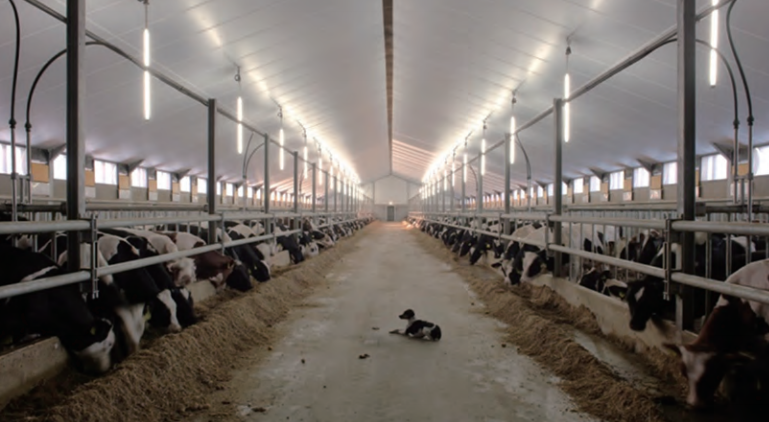Effects of Lighting for Dairy Cows on Milk Production

Directory:
1. Duration of Lighting
2. Light Intensity
3. Color Temperature of Light
4. Lighting Control Strategies
1. Duration of Lighting
Dairy cows breed year-round, and their lighting conditions significantly influence their endocrine system, sexual maturity, feeding habits, growth, and milk production. Recent data from dairy farms indicate that milk production under natural lighting varies with the seasons, peaking in spring and dropping in late summer and early autumn, before gradually improving after October. In a study, artificial lighting extended the daily light exposure for dairy cows from 9.5 hours of natural light to 15 and 18 hours over a 30-day trial. Results showed that at 15 hours of light, both milk production and feed intake were notably higher compared to 9.5 and 18 hours. Thus, when designing lighting systems for dairy cow farms, it is essential to consider the actual lighting needs of the cows and the impact of light cycle variations to maximize the benefits of the lighting control system.
2. Light Intensity
As ruminant mammals, dairy cows require nighttime feeding, but they are naturally skittish. Insufficient or overly bright lighting in the barn at night can disrupt their rumination and eating habits. Research indicates that comfortable lighting can enhance cows' nighttime appetite, leading to improved intake and conversion of roughage. Properly managing the intensity of dairy cows lighting can boost nighttime feed intake, potentially increasing total milk production by 5% to 8%. Therefore, the regulation of nighttime lighting for dairy cow farms should align with the cows' light sensitivity to meet their nighttime activity needs.
3. Color Temperature of Light
When selecting the color temperature for dairy cows lighting, it is important to consider the visual sensitivity of cows. Choosing an appropriate color temperature will help ensure that cows can see well at night.
4. Lighting Control Strategies
Effective light management can significantly enhance the lactation process in dairy cows, leading to improved yield and quality of dairy products. To implement proper light control, the design of the barn should prioritize lighting considerations, strategically placing windows and skylights to maximize natural light. Additionally, artificial lighting options, such as incandescent and fluorescent bulbs, can be utilized to compensate for any deficiencies in natural light. The duration of lighting should be tailored to the physiological requirements of the cows and their lactation stages. Typically, cows in peak lactation require 14 to 16 hours of light daily, while lighting can be reduced during late lactation and dry periods. An automated timing system can be employed to turn lights on and off according to a predetermined schedule, ensuring consistent and accurate lighting durations.
Light intensity is also crucial; both excessively high and low light levels can negatively impact dairy cows. Ideally, light intensity should be kept between 150 to 200 Lux, which can be regularly checked with a light meter, allowing for adjustments in the number and arrangement of lights as necessary. It is important to consider the circadian rhythms of dairy cows in light management, avoiding continuous lighting for 24 hours and ensuring that cows have sufficient time to rest.
5. Related Product
Dairy Cows Light T16

6. Related Blog